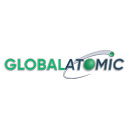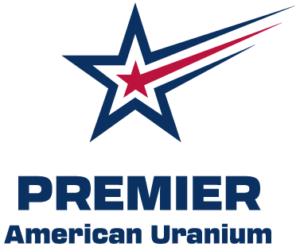What You Need to Understand About the Nuclear Sector Before You Invest in Uranium - Part 6

Western uranium conversion capacity at 91% utilization creates supply bottleneck. WNA projects 5.5-7.7% CAGR to 2040 as utilities secure long-term contracts.
- Conversion defines the next uranium supply constraint. With Western conversion plants running at approximately 91% capacity and inventories drawn down, uranium hexafluoride availability now drives uranium's price floor and contracting dynamics.
- Demand is compounding. The World Nuclear Association forecasts a 5.5% compound annual growth rate in conversion requirements to 2040 under the Reference Scenario, and 7.7% in the Upper Scenario, driven by reactor life extensions, new builds, and small modular reactor deployment.
Western supply remains fragile. Even as ConverDyn, Orano, and Westinghouse Springfields ramp up, recovery timelines lag the pace of nuclear expansion, pushing utilities toward long-term contracting and price escalation. - Integrated and near-term producers stand to gain. Conversion access benefits established producers such as Energy Fuels, while cost-efficient developers like Denison, Global Atomic, IsoEnergy, and Bannerman Energy align with the mid-cycle deficit.
- The investment case: Conversion scarcity elevates valuations for producers with infrastructure leverage and developers in stable jurisdictions poised to supply the next uranium hexafluoride-constrained market.
The Nuclear Revival's Hidden Constraint
The world's renewed embrace of nuclear power is exposing a less-visible choke point: conversion. Before uranium can fuel a reactor, mined uranium concentrate must be transformed into uranium hexafluoride gas, a chemical step that depends on a handful of plants in North America and Europe. As utilities sign new long-term contracts and countries legislate nuclear expansion, conversion supply, not ore supply, is emerging as the critical variable shaping uranium prices and project economics.
Diversified producers like Energy Fuels operating the White Mesa Mill, demonstrate how infrastructure ownership has become a strategic moat. The midstream scarcity represents a structural shift, one that can reprice the entire uranium chain. The World Nuclear Association projects conversion demand to exceed 100,000 tonnes of uranium per year by 2040, yet Western primary conversion facilities operate at approximately 91% of their nominal production capacity, leaving the system vulnerable to unplanned outages or regulatory interruptions.
Troy Boisjoli, Chief Executive Officer of ATHA Energy, frames the broader market context:
"The macro environment in the uranium sector is unlike any time I've seen in my career. The real demand that's being built up coupled with some of the supply side risk is a setup, a structural setup like we have not seen in the uranium space."
Conversion as the New Price Anchor
While uranium mining once defined the market cycle, today the economics hinge on uranium hexafluoride conversion. The World Nuclear Association projects conversion demand to exceed 100,000 tonnes of uranium per year by 2040, growing at 5.5% compound annual growth rate under its base case and 7.7% in the small modular reactor-driven upside scenario. Each small modular reactor deployment wave could add another 26,000 tonnes of uranium per year of conversion needs after 2040.

This surge collides with constrained supply: only a few Western converters, ConverDyn, Orano, and Westinghouse Springfields, handle the bulk of non-Russian throughput. Operating near full capacity, they leave the system vulnerable to unplanned outages or regulatory interruptions. Inventories that once bridged the gap have been drawn down, removing a key buffer. Conversion prices have increased six-fold from end 2021 to mid-2024 to reach historic highs as the tightness of the market continued to increase.
The implication for investors is clear: conversion capacity scarcity effectively sets a higher uranium price floor, altering mine economics and accelerating long-term contracting. Projects that can deliver into this environment, such as Denison's low-cost Phoenix in-situ recovery project or Global Atomic's near-term Dasa mine, gain a competitive edge in utility negotiations. Stephen Roman, President and Chief Executive Officer of Global Atomic, quantifies the strategic opportunity:
"Our mine will produce as much as every uranium mine combined in the United States, and they need the pounds."
Philip Williams, Director & Chief Executive Officer of IsoEnergy identifies conversion as a secondary constraint to the primary challenge:
"Yes, there are issues with conversion and we're seeing people make announcements just at this conference (World Nuclear Symposium) that they're getting into conversion because that is a bottleneck. But you can have all the conversion capacity in the world, all the enrichment capacity in the world, all the nuclear plants being planned to be built, but if you don't have the fuel at the beginning then it's all irrelevant."
Western Dependence & Policy Realignment
Roughly 30% of global conversion capacity resides in Russia, creating a geopolitical fault line. The United States Prohibiting Russian Uranium Imports Act and the United Kingdom Nuclear Fuel Fund both seek to localize midstream capacity, signaling that conversion security is now part of national-energy strategy.
Recent restarts illustrate this policy momentum: ConverDyn's Metropolis Plant resumed operations in 2023; Westinghouse Springfields secured £13 million to design new lines targeting 5,000 tonnes of uranium per year by 2031; and Orano’s Philippe Coste Plant in France, with 15,000 tonnes of uranium per year capacity, was inaugurated in September 2018 and has ramped steadily since its nameplate capacity was set in September 2020, reaching 10,000 tU in 2023. Together, these efforts remain insufficient against forecast demand, underscoring the case for further investment. Even with these expansions, the World Nuclear Association estimates that unspecified supply, including potential production capacity expansion and new projects, will be necessary by the late 2020s or the beginning of the next decade to meet growth in demand over the medium and long term.
For producers, alignment with domestic policy adds resilience. Energy Fuels, with operations in Utah, benefits directly from United States critical-minerals initiatives, while Ur-Energy's in-situ recovery operations in Wyoming tap federal programs that favor American-sourced fuel.
Mark Chalmers, President and Chief Executive Officer of Energy Fuels, underscores the geopolitical dimension:
"I think that people believe that Energy Fuels has positioned itself really well to potentially be in getting recognition from the United States government or the Australian government and European Union for support because if you want to break the dependence on China you have to start by getting materials from someplace other than China."
How Conversion Scarcity Translates into Market Repricing
The shortage of conversion capacity ripples across the fuel cycle. Uranium hexafluoride spot prices have tripled since 2021, raising feedstock costs for enrichers and, by extension, utilities. These downstream premiums propagate upstream, effectively boosting the realized value of mined uranium concentrate and rewarding producers with near-term deliverability.
Companies with established conversion relationships such as IsoEnergy, which maintains a toll-milling agreement with Energy Fuels, are insulated from midstream volatility. Conversely, explorers and developers without conversion access face timing risk as contracts increasingly demand assured uranium hexafluoride delivery schedules.
This repricing dynamic favors low-cost, high-quality projects that can enter production during midstream tightness. Bannerman Energy's Etango and Global Atomic's Dasa features assets where conversion scarcity strengthens project economics by elevating long-term uranium price assumptions used in net present value modeling.
David Cates, President and Chief Executive Officer of Denison Mines articulates the value of timing:
"There's going to be incredible value to being in production, having uncommitted or market-exposed production right at a time when the market realizes that there isn't actually enough."
Supply Response & Capital Discipline
Even amid price incentives, bringing new conversion capacity online requires significant lead time and regulatory clearance. The lag between policy recognition and operational build-out mirrors the broader uranium supply-chain inertia. As a result, miners are adjusting strategy to capture value within existing infrastructure constraints. Given the extremely tight balance between supply and demand in the conversion market, additional conversion production is being considered, notably at Westinghouse Springfields in the United Kingdom, where Westinghouse is evaluating new conversion capabilities.
Integrated producers like Energy Fuels expanded its processing network beyond uranium into rare earths and heavy mineral sands, diversifying cash flow and strengthening its critical-minerals platform. Mid-tier developers are emphasizing capital efficiency and jurisdictional security. Denison Mines' Phoenix in-situ recovery project, with an all-in cost near United States dollar 16 per pound, and Global Atomic's Dasa, showing an after-tax internal rate of return of 57% at United States dollar 75 per pound, highlight how low-cost profiles position companies to thrive even if conversion premiums temporarily compress margins.
Exploration companies are aligning themselves geographically. ATHA Energy's multi-project portfolio across Canada ensures exposure to future conversion-linked infrastructure in Saskatchewan, while equity stakes in Premier American Uranium, strengthens access to the United States downstream. Producers like enCore Energy's in-situ recovery facilities at Rosita and Alta Mesa illustrate how short-cycle in-situ recovery assets can rapidly respond to domestic supply programs.
William Sheriff, Founder and Executive Chairman of enCore Energy highlights the talent dimension of execution risk:
"The one thing you can't fix is the shortage of talent… I've always said that our biggest assets are people, our bench strength… and that's cost us a few extra dollars, but it's the indispensable part of really what's propelled our significant performance in the last four months"
Investor Perspective, From Mining Margins to Fuel-Cycle Integration
Uranium valuation now extends beyond head grades and operating costs. Integration, physical, contractual, or jurisdictional, has become the primary differentiator of risk-adjusted returns.
Producers with conversion access enjoy higher visibility on cash flow; developers in stable jurisdictions gain financing advantages as lenders price in reduced geopolitical exposure; explorers tied to established mills command premium optionality. These patterns mirror previous commodity cycles where midstream scarcity redefined valuation frameworks, comparable to smelting bottlenecks in copper or refining shortages in lithium. Within this context, Ur-Energy's long-term contracts, Denison's liquidity-backed construction plan, and Bannerman's fully permitted Etango project all demonstrate how financing and permitting readiness translate into resilience during infrastructure shortages.
Matthew Gili, President of Ur-Energy emphasizes the advantage of being operational during price cycles:
"The entities that make the real money are the entities that are operating when the price goes up, not so much the companies or entities that are waiting for the price to go up to implement their construction program. The cycles don't last long, you've got to be in production during the cycle."
Colin Healey, Chief Executive Officer of Premier American Uranium highlights the role of strategic capital in demand expansion:
"What I love about big tech being involved here is those deep pockets. They're really driving small modular reactor development, new nuclear plant construction, new demand specifically for nuclear energy."
The Investment Thesis for Uranium
- Conversion scarcity anchors higher uranium prices. Limited uranium hexafluoride capacity elevates the structural price floor, supporting long-term contracting and reducing the risk of price collapse during periods of oversupply in the mining sector.
- Integrated producers outperform. Firms with conversion or tolling access, such as, Energy Fuels, enCore Energy and Ur-Energy, capture downstream premiums and demonstrate greater resilience to midstream volatility than peers without conversion relationships.
- Low-cost developers gain leverage. Projects such as Denison’s Phoenix, Global Atomic’s Dasa, and Bannerman’s Etango are well-positioned for the next contract cycle, benefiting from elevated long-term price assumptions that reflect conversion scarcity.
- Exploration exposure adds optionality. ATHA Energy and Premier American Uranium offer jurisdictional diversification and near-term catalysts, with alignment to domestic policy initiatives enhancing visibility and reducing geopolitical risk.
- Policy momentum supports Western supply chains. United States and European funding for conversion expansion enhances visibility for compliant, environmental, social, and governance-aligned operators, while Russian import restrictions create structural demand for alternative sources.
Conversion Defines the Next Price Cycle
Conversion capacity, not ore supply, now dictates uranium's trajectory. As the nuclear build-out accelerates and inventories thin, utilities must secure conversion access years in advance. This dynamic shifts market power toward integrated and jurisdictionally stable producers while raising the incentive price for new projects.
Understanding conversion bottlenecks is essential to anticipating uranium's next structural repricing. Companies positioned with access, low costs, and credible timelines stand to benefit most as uranium hexafluoride scarcity reshapes the economics of the global nuclear fuel cycle.
Read more:
Part 5 - Uranium Supply and Demand
Part 2 - Nuclear Energy Security Imperatives
TL;DR
Uranium conversion has emerged as the critical bottleneck in the nuclear fuel cycle, with Western facilities operating at approximately 91% capacity while demand grows at 5.5% to 7.7% annually through 2040. Unlike previous cycles dominated by mining constraints, today's market is defined by limited uranium hexafluoride conversion capacity concentrated in just a few North American and European plants. This scarcity has elevated conversion prices six-fold since 2021 and is forcing utilities into multi-year supply agreements. For investors, the dynamics favor integrated producers like Cameco and Energy Fuels with direct conversion access, alongside low-cost developers such as Denison, Global Atomic, and Bannerman positioned to supply the next deficit cycle. Conversion capacity, not ore availability, now sets uranium's structural price floor.
FAQs (AI-Generated)
Analyst's Notes




Subscribe to Our Channel
Stay Informed




















































